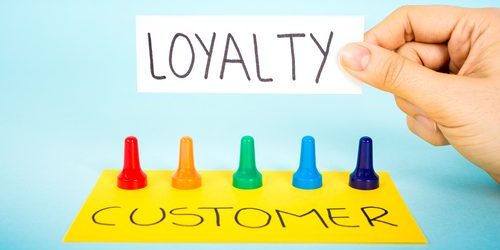As the captain at the helm of your company's finances, it's critical that you chart a course that steers clear of dangerous liabilities. Not all liabilities, however, can be averted - in fact, some are part and parcel for increasing your company's bottom line.
One such necessary hazard is loyalty program liability. This liability arises from the costs incurred at the moment that a loyalty program member redeems some or all of their outstanding points. It's a by-product of energized customer engagement. However, with high customer engagement leading to a 90% uptick in purchase frequency and 60% higher spend per transaction, it's not a liability with which companies can afford to dispense.
New regulations have changed the way that accounting teams must allocate revenue to manage loyalty program liability. The principal tenet to which they will have to adhere is that separate accounting will need to be carried out for every performance obligation, and transactions with multiple performance obligations will require that the revenue for each one be logged individually. Most importantly, revenue from the issuance of loyalty points must be deferred and cannot be recognized until either the reward is redeemed, or the customer's claim to the reward expires.
In the event that your colleagues in accounting fail to defer the correct amount of revenue relative to the scale of the liability, it can send your financial reports into a tailspin. Miscalculations that underestimate the amount of revenue necessary can lead to you not having enough to cover the incoming flurry of costs. Conversely, setting aside too much revenue can relegate funds to a state of financial suspended animation known as “stuck revenue.”
Read on to discover what every CFO needs to know about loyalty program liability.
1. These liabilities carry financial impact

The financial consequences of loyalty program reward points aren't felt just at the moment of redemption, but also at the moment at which they're issued. Once rewards points are granted to program members, the business comes into ownership of the associated costs that accompany points that can be redeemed. Depending on the method of accounting employed by your program, these may manifest either in the form of an immediate expense recognition or as a revenue reduction.
Though accounting departments may fixate on current liability levels, the role of finance teams is to know how liability will develop over time. In order to accurately forecast liability levels, the finance department must be equipped with a robust understanding of the cost per point (CPP) and ultimate redemption rate (URR).
As the URR changes over time, failures to incorporate its fluctuations in your company's financial planning could cause material impact to its financial outcomes. Similarly, because URR and CPP are the primary determinants of loyalty program liability, overlooking them in the development of your financial strategy could lead to the liability corroding your bottom line.
It’s important to avoid the pitfalls that finance leaders encounter when trying to reduce the imprint of loyalty program liability upon their income statements. One of the most common mistakes finance teams make is trying to reduce liability by driving up breakage. Breakage, or the percent of points a customer earns but does not redeem, can reduce the the strain induced by loyalty program liability. However, what it amounts to are customers opting to disengage from your company and the financial consequences that accompany the drop-off in consumer interest.
2. As your company gains loyal customers, breakage rates will decrease

The purpose of a loyalty program is to incentivize customers to go to your company first for all of their needs related to your product line. The way it accomplishes this is by rewarding them for their business, and adding in a new variable to consider in their calculations. However, for these rewards to have value to customers, they must be worth something, and the final cost of providing them is where companies incur loyalty program liability.
As a result, the more engaged and loyal customers a company has, the higher its liability estimates will be. Though it might seem counterintuitive, bringing up breakage rates can take a massive toll on a company’s finances. With 20% of customers driving 80% of redemptions, increasing breakage can cause the purchasing frequency of some of the company’s most prolific shoppers to wilt.
Disengaging from the strongest segment of your company's customer base will only lead to significantly-diminished returns in the long-term.
Instead, a more salient approach is to keep breakage moving down, while using an influx of new customers to offset its impact.
Another tactic is to work alongside marketing teams to find ways of driving down CPP. In this way, liability can be decreased without sacrificing desirable customer engagement.
3. Customer lifetime value (CLV) lets you know what you're getting out of holding on to the liability

When it comes to loyalty program liability, CFOs should always ask themselves, “Is the juice worth the squeeze?” One useful metric for correctly answering this question is customer lifetime value (CLV). CLV takes into consideration costs borne from redemptions, as well as the revenue generated by customers throughout the course of their engagement with the company.
One particularly important element upon which CLV focuses is revenue. In contrast to liability, projected future revenue isn't something you can add to a balance sheet - and that's why there’s traditionally such an emphasis on cost. However, the goal of a liability program is to increase revenue, so that is a component that should not be left out.
By looking at CLV, CFOs can better contextualize their redemption rates, and better decide how to proceed appropriately. Simply stated, without a strong understanding of CLV, it’s impossible to adequately assess the health and viability of your loyalty program.
The bottom line
Loyalty program liability can have material consequences upon a company's financial standing. However, CFOs should resist the urge to simply drive down redemption rates, and instead, employ holistic metrics such as CLV to inform their long-term strategies.
With careful attention paid to forecasts of customer behavior, finance teams can draft a blueprint guaranteed to keep the company in the black.





